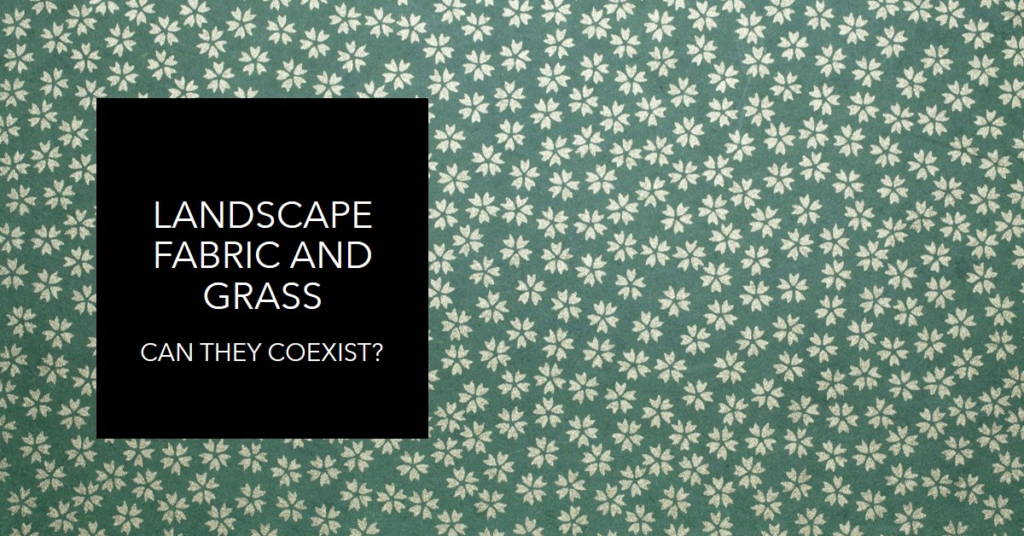
Table of Contents
- Understanding Landscape Fabric: The Basics
- The Mechanics of Landscape Fabric
- Potential Benefits of Using Landscape Fabric
- The Drawbacks: Can Landscape Fabric Kill Grass?
- Proper Installation: Key to Success
- Alternatives to Landscape Fabric
- Long-Term Maintenance and Considerations
- Case Studies: Real-Life Applications
- Conclusion: Weighing the Pros and Cons
Understanding Landscape Fabric: The Basics
Landscape fabric, also known as weed barrier fabric, is a material used in gardening and landscaping to prevent weed growth. Made from woven or non-woven materials, it allows water and nutrients to pass through while blocking sunlight and air from reaching unwanted plants. This selective permeability makes landscape fabric an attractive choice for gardeners aiming to maintain tidy, weed-free spaces.
In addition to weed control, landscape fabric can be used for soil erosion prevention, moisture retention, and temperature regulation. Its multifunctional nature underscores its popularity among both amateur and professional gardeners. However, its impact on existing grass is a topic of considerable debate.
The Mechanics of Landscape Fabric
To understand whether landscape fabric can kill grass, it is essential to grasp how it functions. The fabric works by creating a barrier that obstructs sunlight, which is vital for photosynthesis. Without sufficient sunlight, plants, including grass, cannot produce the energy needed for growth and survival.
Additionally, landscape fabric limits air circulation and can alter soil conditions. Reduced oxygen levels and hindered nutrient exchange may stress grass, potentially leading to its decline. While these attributes make the fabric effective against weeds, they can also pose a risk to desired vegetation if not used correctly.
Potential Benefits of Using Landscape Fabric
Despite the concerns, landscape fabric offers several benefits when used appropriately. Firstly, it provides a physical barrier that minimizes weed invasion, reducing the need for chemical herbicides. This can lead to a healthier environment, especially in areas where pets and children play.
Secondly, landscape fabric helps conserve soil moisture by reducing evaporation. This can be particularly beneficial during dry spells, as it ensures that plants receive adequate water. Moreover, the fabric can aid in temperature regulation, protecting roots from extreme heat or cold.
The Drawbacks: Can Landscape Fabric Kill Grass?
While landscape fabric has its advantages, it is not without drawbacks. One of the primary concerns is its potential to harm existing grass. When placed over grass, the fabric blocks sunlight and restricts airflow, essential elements for healthy grass growth. Over time, this can cause the grass to weaken, turn yellow, and eventually die.
Another issue is the potential buildup of soil and organic matter on top of the fabric. This layer can create a conducive environment for weeds, negating the fabric’s primary purpose. Additionally, it can make the removal of the fabric challenging, often necessitating complete replacement rather than simple maintenance.
Proper Installation: Key to Success
To minimize the risk of killing grass, proper installation of landscape fabric is crucial. Begin by thoroughly clearing the area of any existing vegetation, including grass. This can be achieved through manual removal, herbicides, or a combination of both. Ensuring the area is free of living plants reduces the risk of unintentional damage.
Next, lay the fabric flat, securing it with landscape staples to prevent shifting. Overlap the edges to ensure complete coverage and cut holes only where necessary for plants. Adding a layer of mulch on top of the fabric can further enhance its effectiveness by providing additional weed suppression and aesthetic appeal.


Alternatives to Landscape Fabric
For those wary of using landscape fabric, several alternatives exist. One popular option is organic mulch, such as wood chips, straw, or compost. These materials naturally decompose over time, enriching the soil while suppressing weeds. However, they require regular replenishment to maintain effectiveness.
Another alternative is the use of ground covers, such as clover or creeping thyme. These low-growing plants can outcompete weeds and provide a green, living mulch. Additionally, hand weeding and the use of pre-emergent herbicides are other methods to control weeds without the potential drawbacks of landscape fabric.
Long-Term Maintenance and Considerations
Maintaining a landscape fabric installation involves periodic checks and adjustments. Over time, soil, debris, and organic matter can accumulate on top of the fabric, potentially fostering weed growth. Regularly adding mulch and removing any emerging weeds can help maintain its effectiveness.
It is also important to monitor the health of any plants growing through the fabric. Ensure they receive adequate water and nutrients, as the fabric can sometimes impede these elements. If plants show signs of stress, consider adjusting or replacing the fabric to ensure their continued health.
Case Studies: Real-Life Applications
To better understand the impact of landscape fabric on grass, let’s consider some real-life scenarios. In one suburban garden, the homeowners used landscape fabric to create a weed-free flower bed. Despite their efforts, the underlying grass began to die within a few weeks, highlighting the fabric’s potential to harm existing vegetation.
Conversely, a professional landscaper employed landscape fabric in a commercial setting, carefully removing all grass beforehand. The result was a pristine, low-maintenance area with minimal weed growth and no adverse effects on surrounding plants. These examples underscore the importance of proper preparation and installation.
Conclusion: Weighing the Pros and Cons
In conclusion, while landscape fabric can effectively control weeds and offer other benefits, it has the potential to kill grass if not used correctly. Proper installation, regular maintenance, and consideration of alternatives are crucial to maximizing its advantages while minimizing risks. By understanding the mechanics of landscape fabric and applying best practices, gardeners can make informed decisions that support the health and beauty of their landscapes.
Ultimately, the choice to use landscape fabric should be based on individual needs and circumstances. Whether aiming for weed suppression, moisture retention, or erosion control, careful planning and execution can help achieve desired outcomes without compromising the vitality of existing grass.


